The Swedish club Hammarby IF have made constant progress since the arrival of Martí Cifuentes, who was hired as head coach in January 2022.
The Spanish coach from Sant Cugat finished with the team in third place with 56 points in the league — one behind second-placed Djurgårdens and eight behind champions Häcken — and runner-up in the cup, losing the final to Malmö on penalties, coming so close to winning a title.
Considered by many as one of the brightest and most promising coaches with his distinctive Spanish and Catalan football mindset. Martí Cifuentes, who just finished his first season, can put much of his quick success down to his tactical prowess with intelligent tactical approaches.
As such, this piece will be a tactical analysis looking to provide a comprehensive analysis of these strategies both in possession and out of possession, to observe how they have been adapted to stifle opponents and focus on the key features that have put Hammarby IF in contention for European football through UEFA Europa Conference League.
Formations
Martí Cifuentes, during his first season at Hammarby, concentrated his principles and tactics around 4-3-3 and 4-1-4-1 structures for the majority of last season and occasionally transformed to 4-4-2 or 4-2-3-1 formations as the below graphic demonstrates.
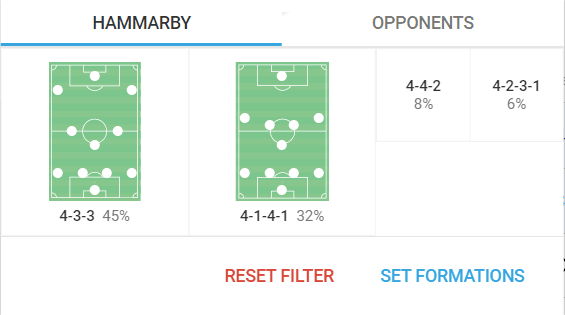
The 4-3-3 base formation variations give him the possibility to be flexible and surprising with his tactics.
Hammarby, with Martí Cifuentes have an average possession rate of 56.3%. When compared to Miloš Milojević’s Hammarby team of last season, who achieved 51.15% possession. This signals a change of approach to one that looks more to control the game by possession.
Under Martí Cifuentes, Hammarby scored 2.14 goals per 90 from 1.84 xG per 90. The defensive security is even more impressive. They conceded only 0.93 goals per 90 from 1.1 xG, less than a goal per game.
Hammarby under Cifuentes have averaged 465.84 passes per match (83.5% accuracy) and 169.29 forward passes (77.2% accuracy). They look to progress quickly and vertically in the optimal moment and seek to create superiorities all around the pitch.
Deeper Build-Up
Hammarby with Martí Cifuentes prefer a 4-3-3 system, using deep full-backs and asymmetric #8s (one higher & one deeper). They implement rotations and inverted full-backs to confuse the opposing team while keeping depth and width as much as they can to distort them.
Within deeper build-up from the goalkeeper, who is used to create a numerical advantage earlier, Hammarby varied between approaches utilising a single-pivot and a deep double-pivot within the 4-3-3 and the height of an attacking trio to pin the opposition’s last line to open a space in midfield to exploit when trying to escape opposition presses.
This can be depicted in the first graphic below against Helsingborgs’ high pressing, as the goalkeeper plays to one of the centre-backs, they are in a narrow position to receive within their own box on a hypothetical diagonal line, then here the ball carrier does not have central options, the opposing #8 dropped off which dragged the opposing player with him whilst the left-back moving forward to the targeted space. Furthermore, the right #8 had dragged the opposition’s #6 away. As clear as that is a big space between the midfield and the backline resulting from the positioning of the attacking trio who pinned them higher on the pitch.
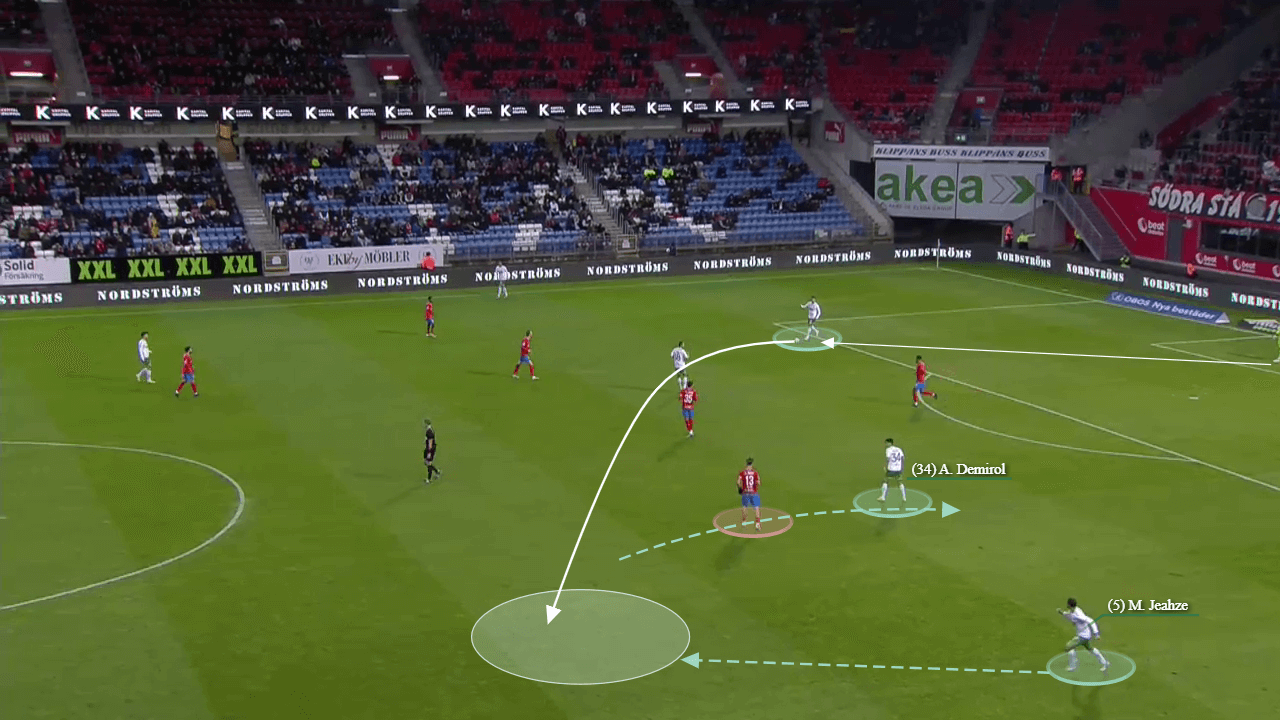
Regarding variations in the deeper build-up, Martí Cifuentes made his team dynamic and capable of confusing the pressing schemes and inviting the pressure to penetrate it by implementing rotations through the principles of the positional play.
Another way of confusing the pressing scheme can be seen in the graphic below against Kalmar. Here, they used the asymmetric full-back after provoking the opposing player to press whilst the left-back departed his starting position and then inverted to either receive or create space for his #8 to combine directly or act as a third man. The team usually have the intention to play directly if it is unrestricted. Here in the graphic below, After #6 received and invited pressure, a passing lane to the dropping-off striker was opened and he subsequently combined with the left-back to probe further forward into the opposing half.
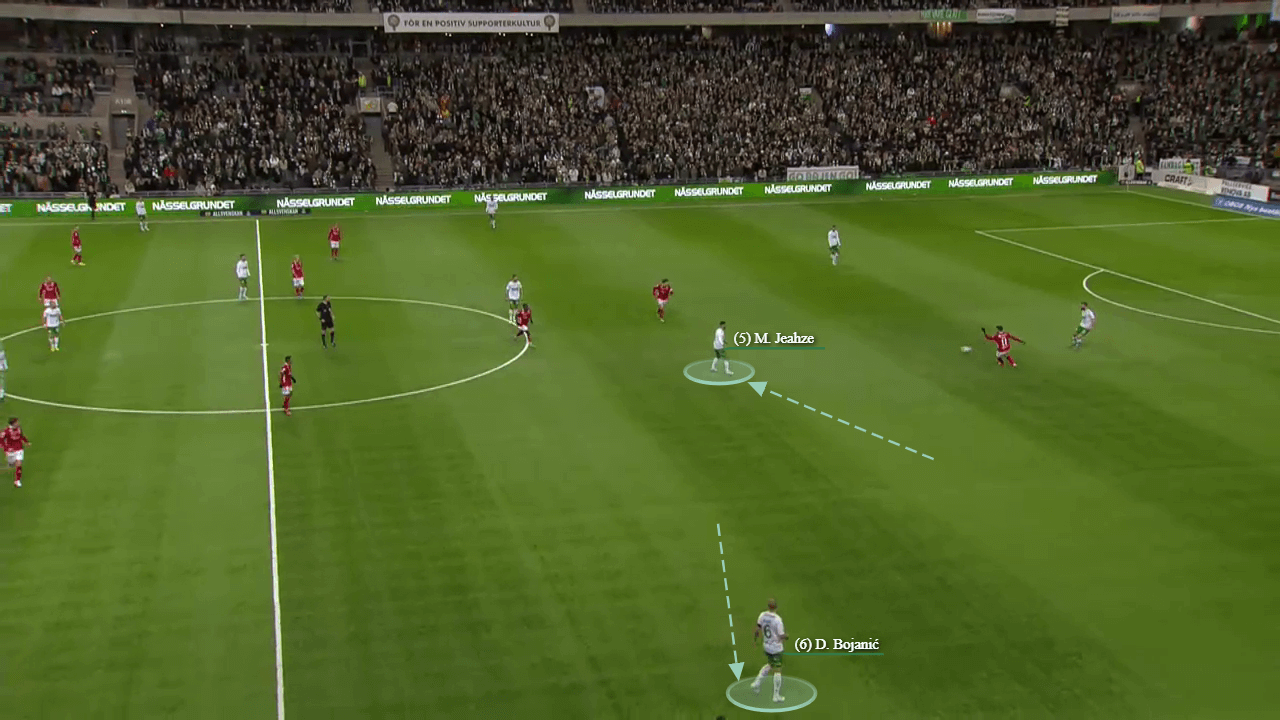
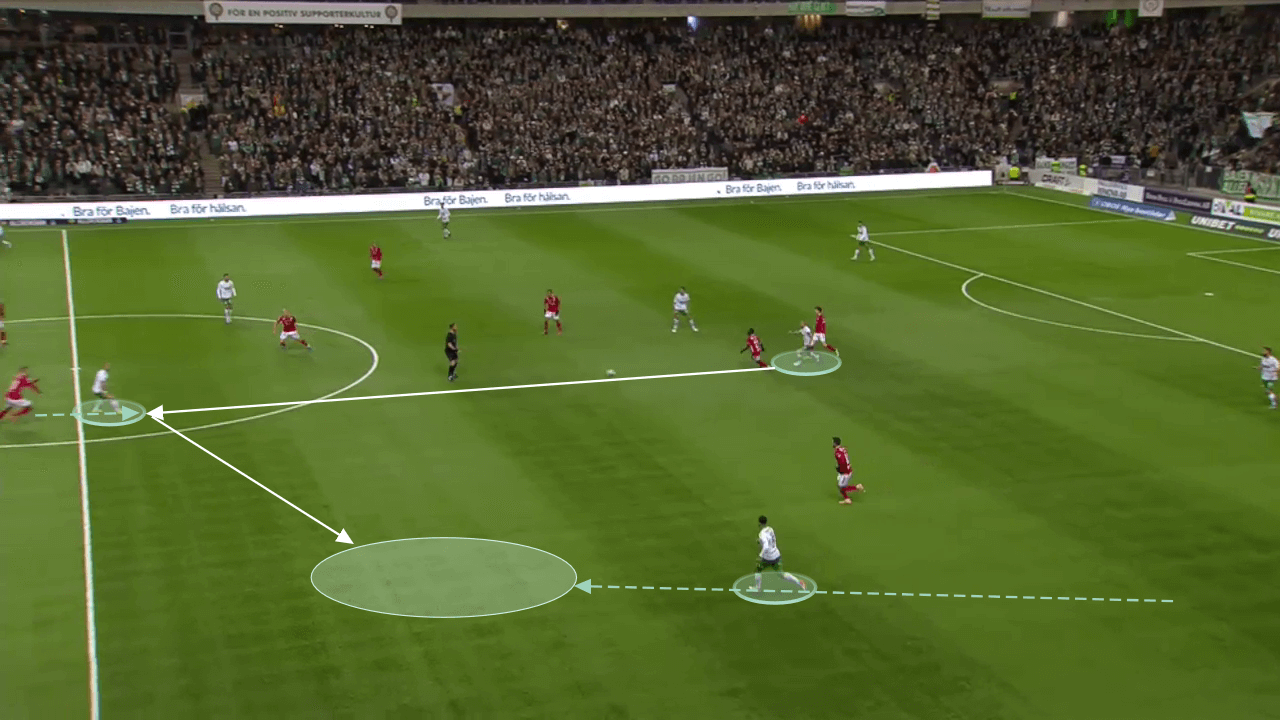
Against tight pressing schemes or man-marking ones, Hammarby maintain an extra option due to the existence of the goalkeeper. Here in the graphic below as soon as he received the ball from the centre-back, the GK kept his composure whilst the presser considered the back pass as a trigger and curved his run. The backline was quiet, containing the pressure, and applied a third-man combination. Martí Cifuentes’s team, in this scene, maintains thoughts of rotations between the full-back and the midfielder.
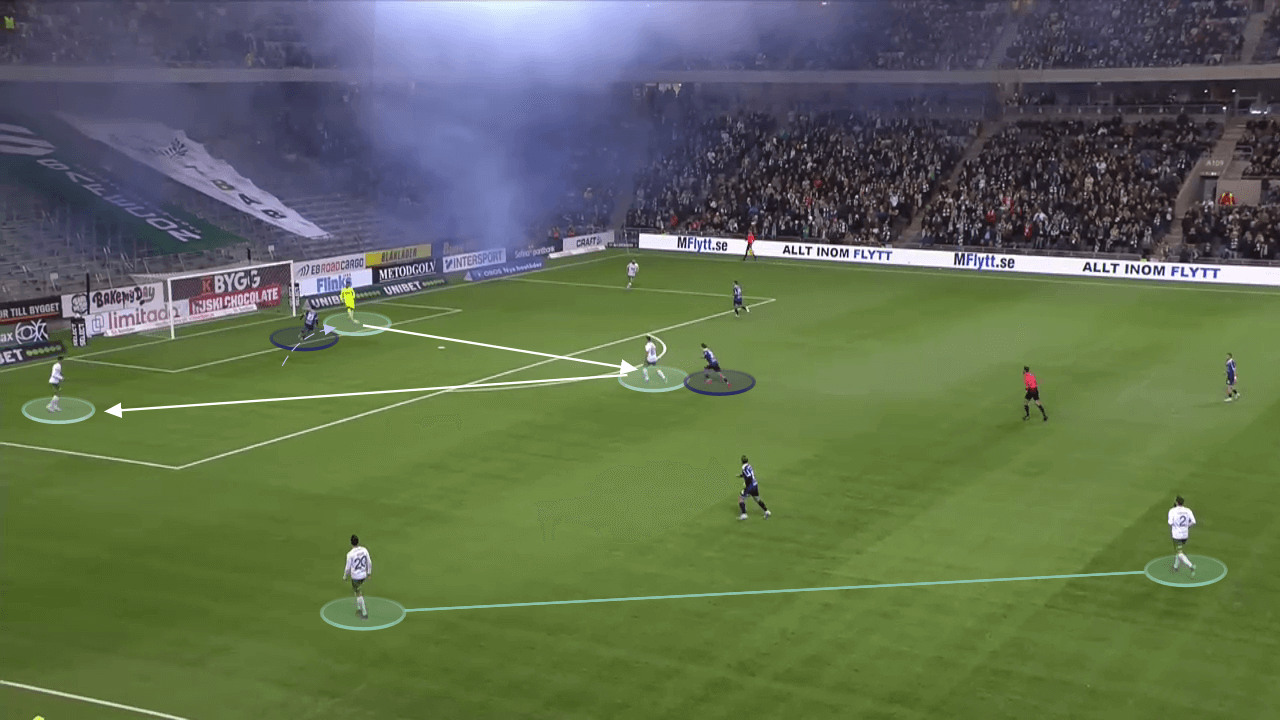
Occasionally, Hammarby attempt to play over the high block with a long-range pass in behind toward the striker or the wide wingers whose job it is to stretch the opposition’s backline.
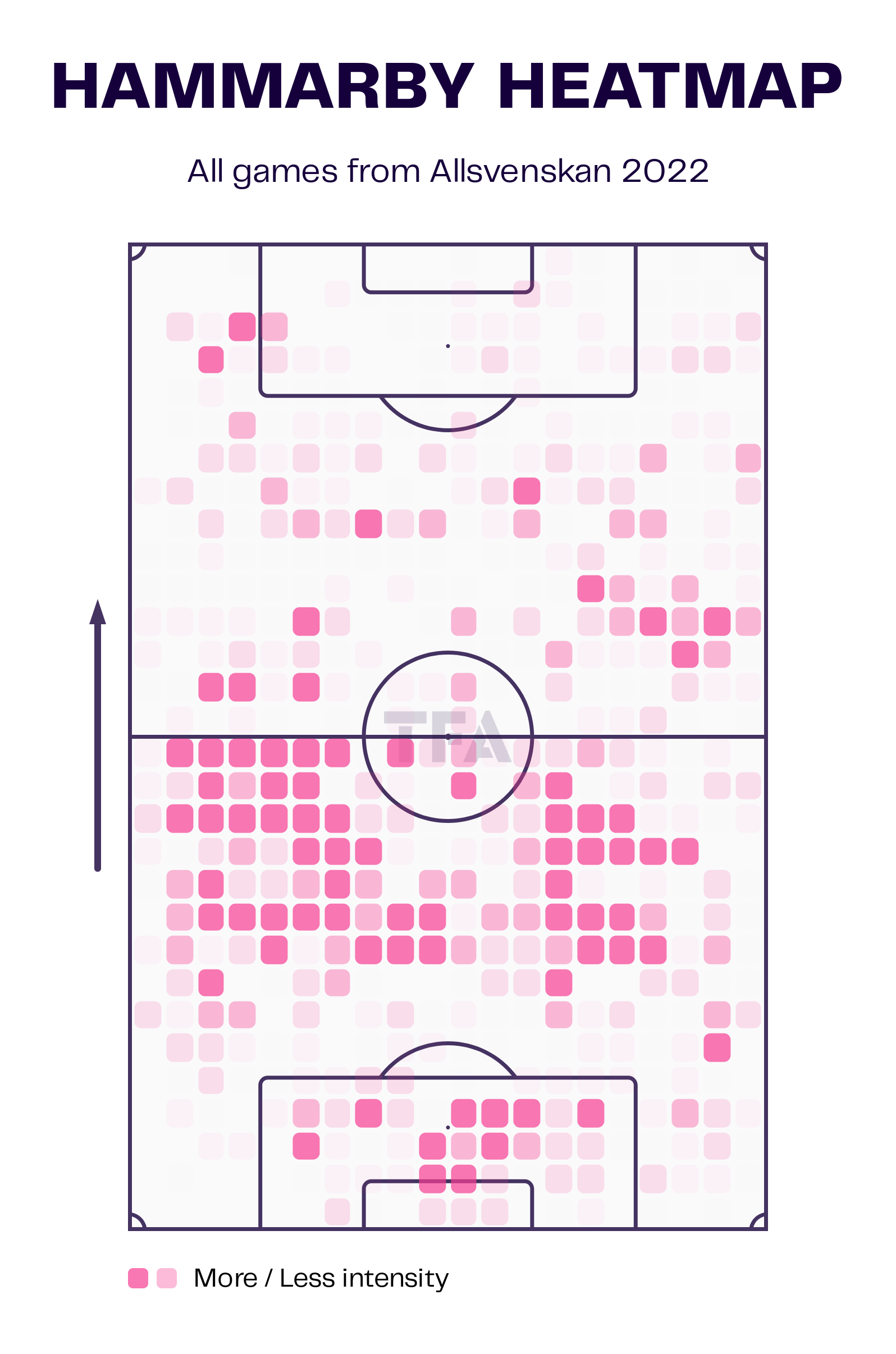
Attacking mechanisms strategies
In the progression phase, Martí Cifuentes seems to usually vary between 3-2-5 and 2-3-5 dynamic structures to penetrate, creating superiority in the first line by dropping one of the midfielders or even inverting the full-back, and in the last line by stretching the opposition’s defensive unit horizontally and making space to exploit.
Once Hammarby progress into the opposition’s half, a significant volume of their attacking prowess is based upon the variety of combinations used and the existence in between the lines behind the midfield in the interior corridors that allow them to progress and create the superiority there over the full-backs. They position themselves dynamically as high as possible, then do good movements and counter-movements which create confusion.
The first to consider is the use of the half-spaces, an example can be demonstrated against Elfsborg and Helsingborgs in the graphics below. In such situations, the positional play was excellent to create diagonal passing lanes inside from the full-back, before the outside pass is played.
Once the left winger received a diagonal pass from the midfielder, the left full-back started his underlapping run which forced the defender to question who he should track. These actions gave the winger time and space to decide or even flick the ball into the cut-back zone for the full-back (prime locale for chance creation).
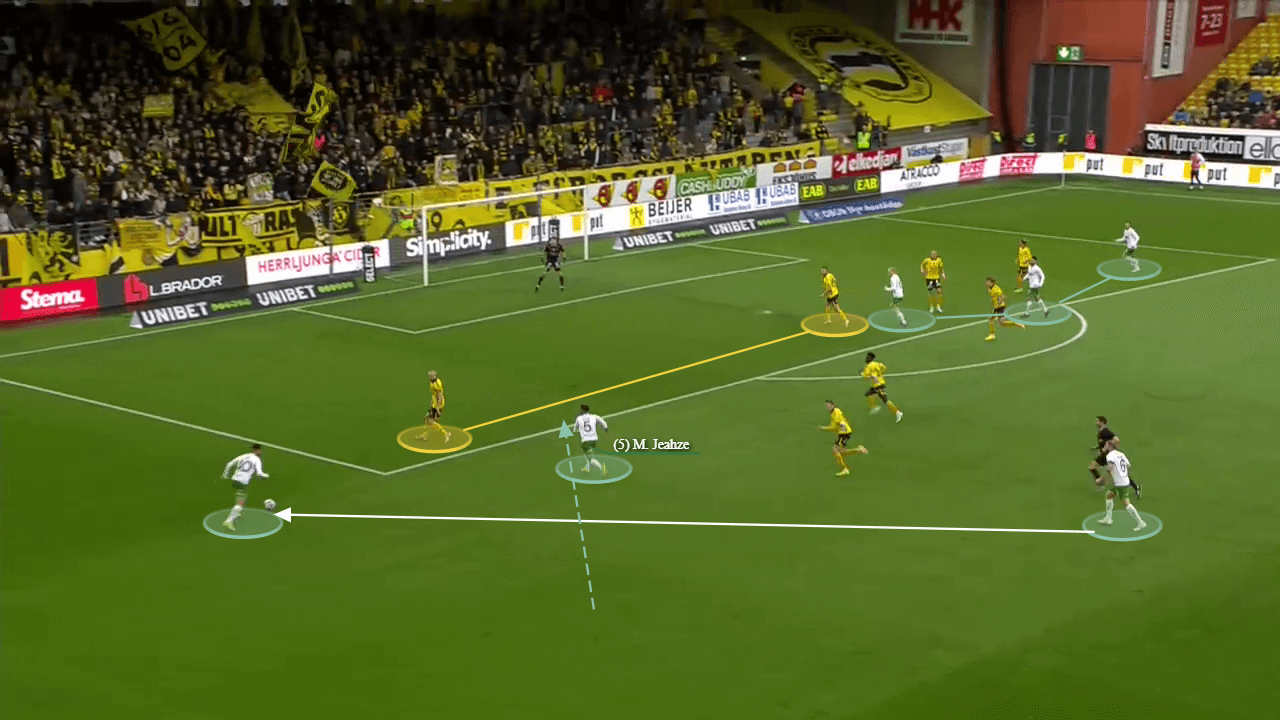
Here, the diagonal pass was opened to the ball-carrying centre-back because of the full-back position. The opposition’s full-back reacted and seemed to engage, which opened the half-space for the #8 to exploit.
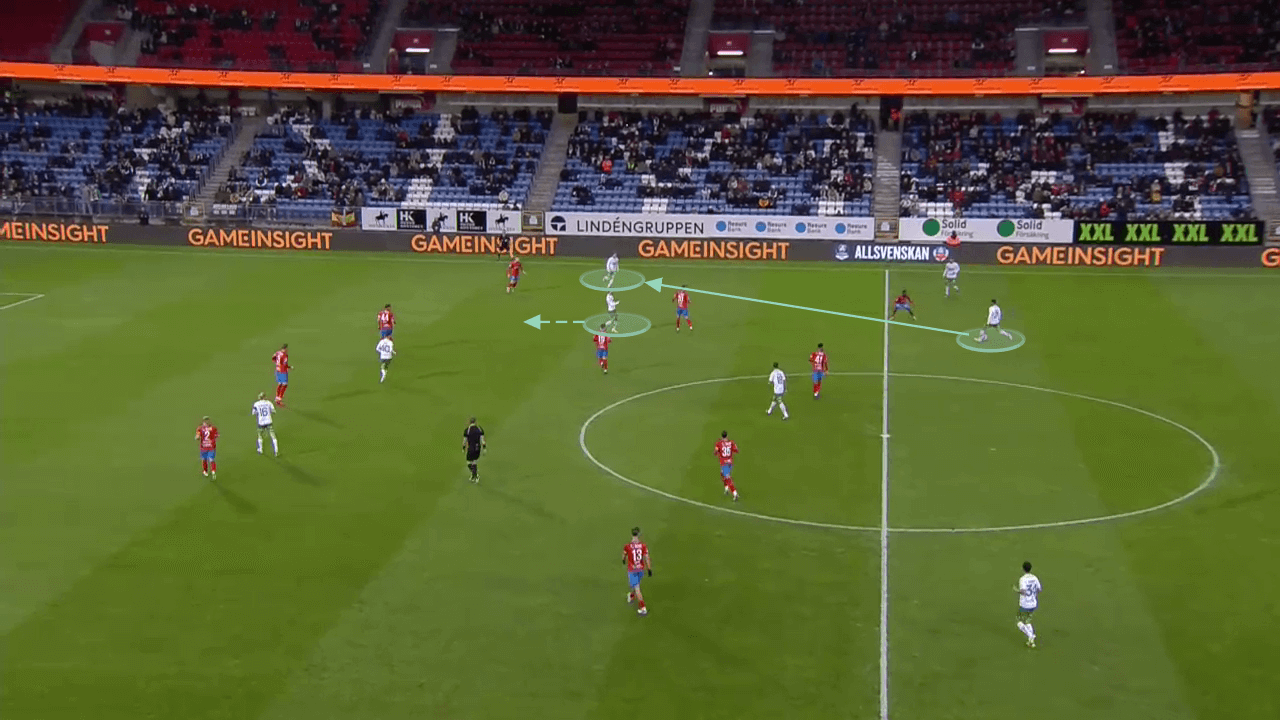
Additionally, Cifuentes’ prime goal is to exploit the spaces in between lines and create a positional advantage over the backline; that’s obvious in the following graphics.
Here, the left-back inverted and then intended to play a progressive pass behind the midfield. Meanwhile, the team was in a suitable state there creating a numerical superiority over the full-back. Once the ball was played, they exploited the half-space.
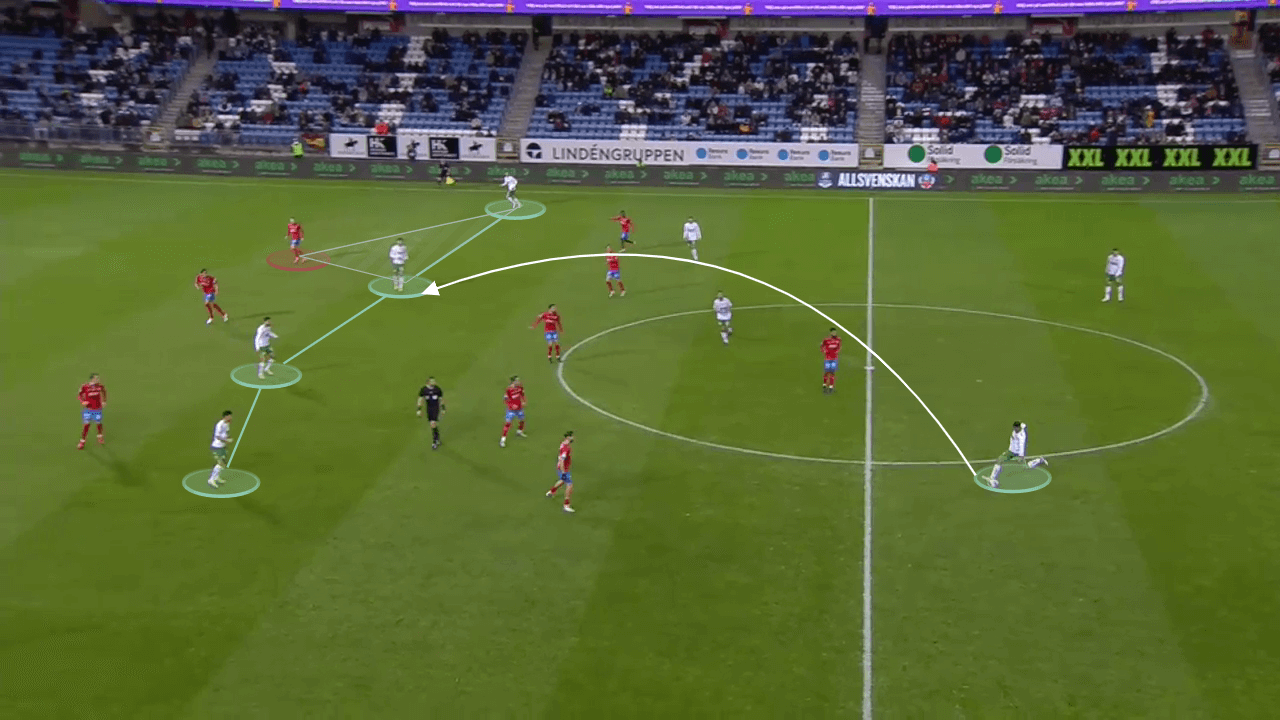
Another execution versus Kalmar: playing a long-range pass to the overlapping right-back.
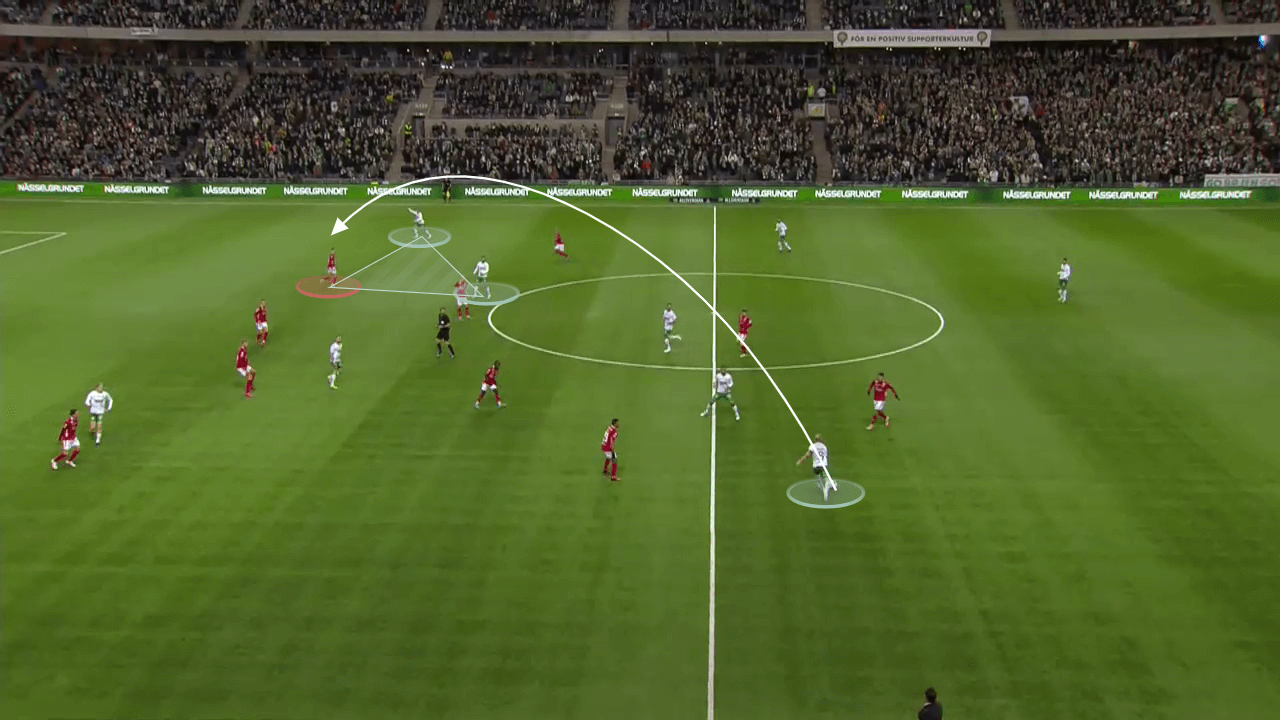
Martí Cifuentes’s style of play excellently created space through the rotations.
Below, once the central penetrations are closed, the midfielder dropped off and the full-back overlapped on the free space due to the winger’s inside movement which dragged the opposition full-back. Then, they played a long ball there and exploited the interior corridors.
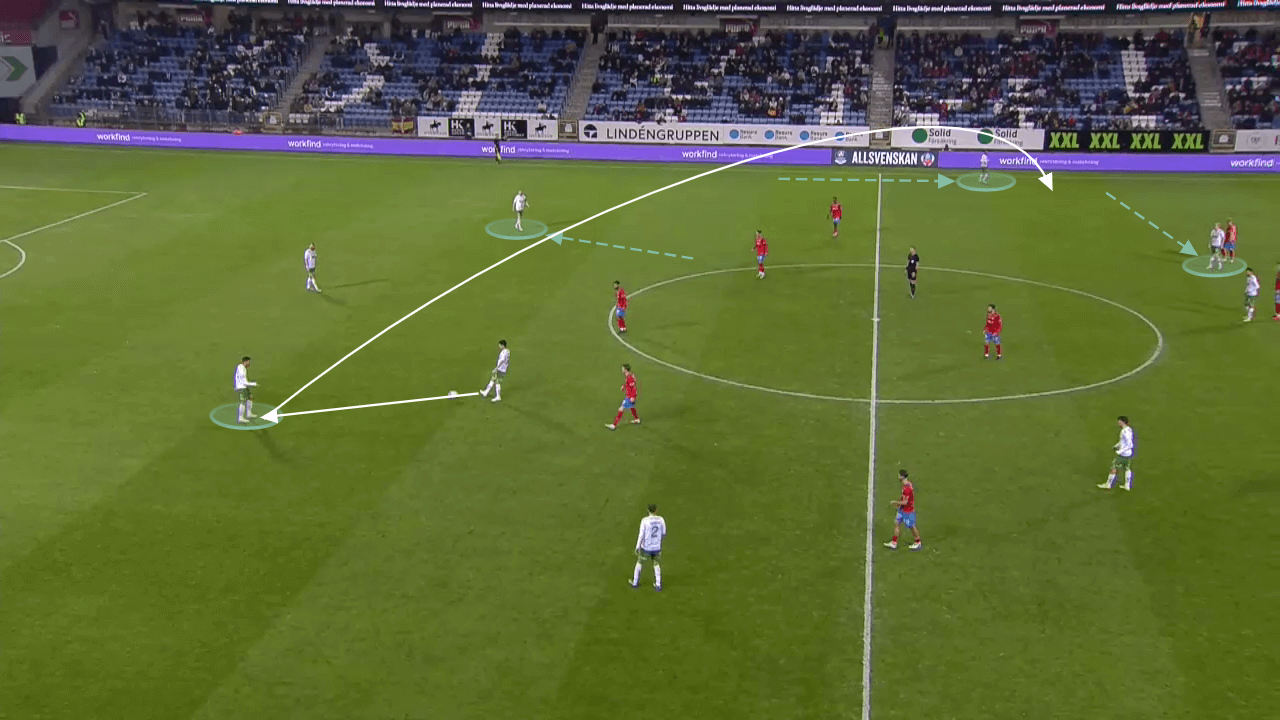
Attacking the opposition backline with vertical & diagonal deep runs is a big part of the philosophy for Hammarby under Martí Cifuentes. They create combinations like 1-2s or third-man runs to pin the defenders with this goal in mind.
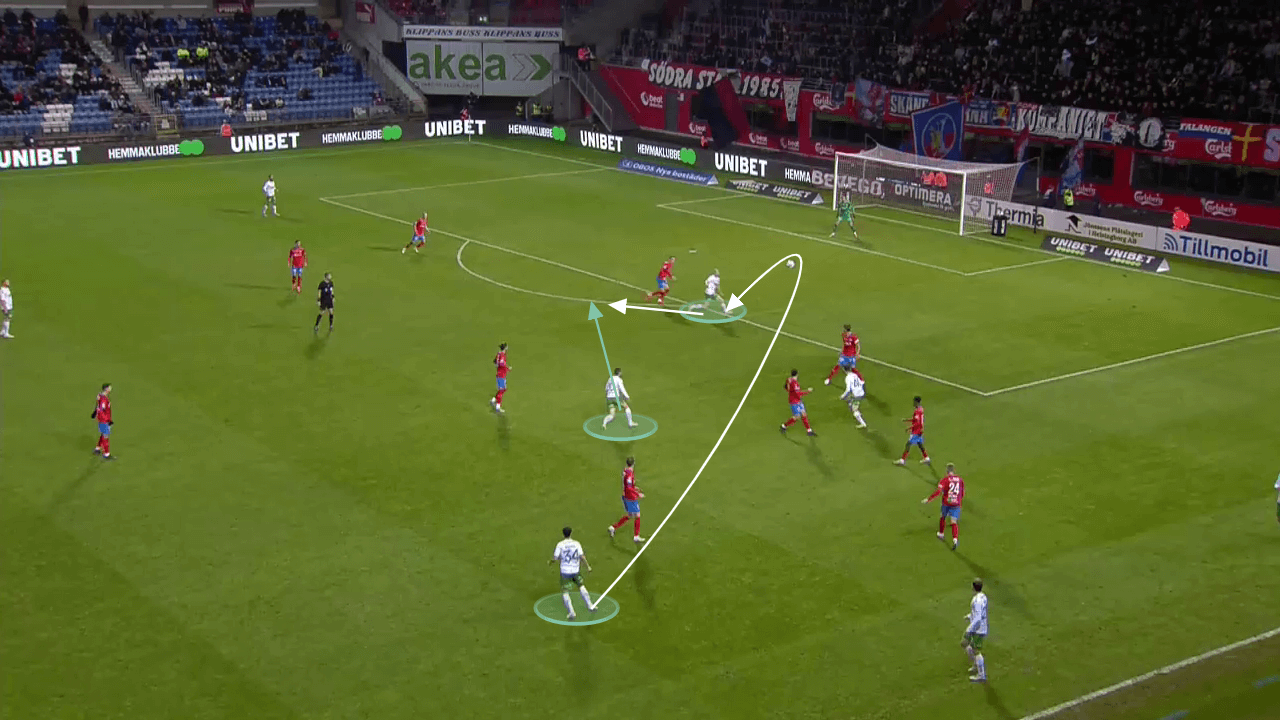
They like to attack the spaces directly by creating numerical and dynamic superiorities.
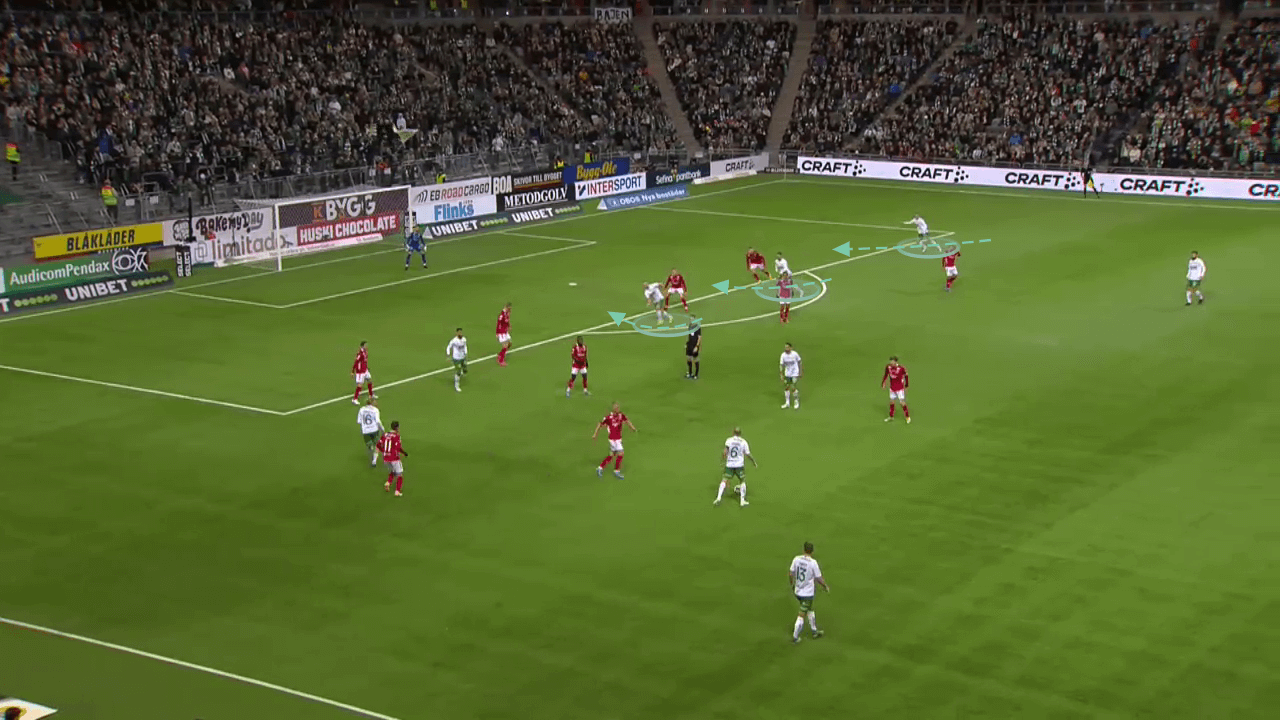
Defensive Approaches
Switching the focus onto Hammarby’s approach out of possession, their approach to pressing sees them use flexible roles to regain possession primarily in wide areas, but also in central areas when deemed most useful using the same system.
Martí Cifuentes seemed to utilize a 4-5-1 mid-block structure most of the time, minimising gaps between the lines, and waiting for any pressing triggers to move higher up the pitch to press.
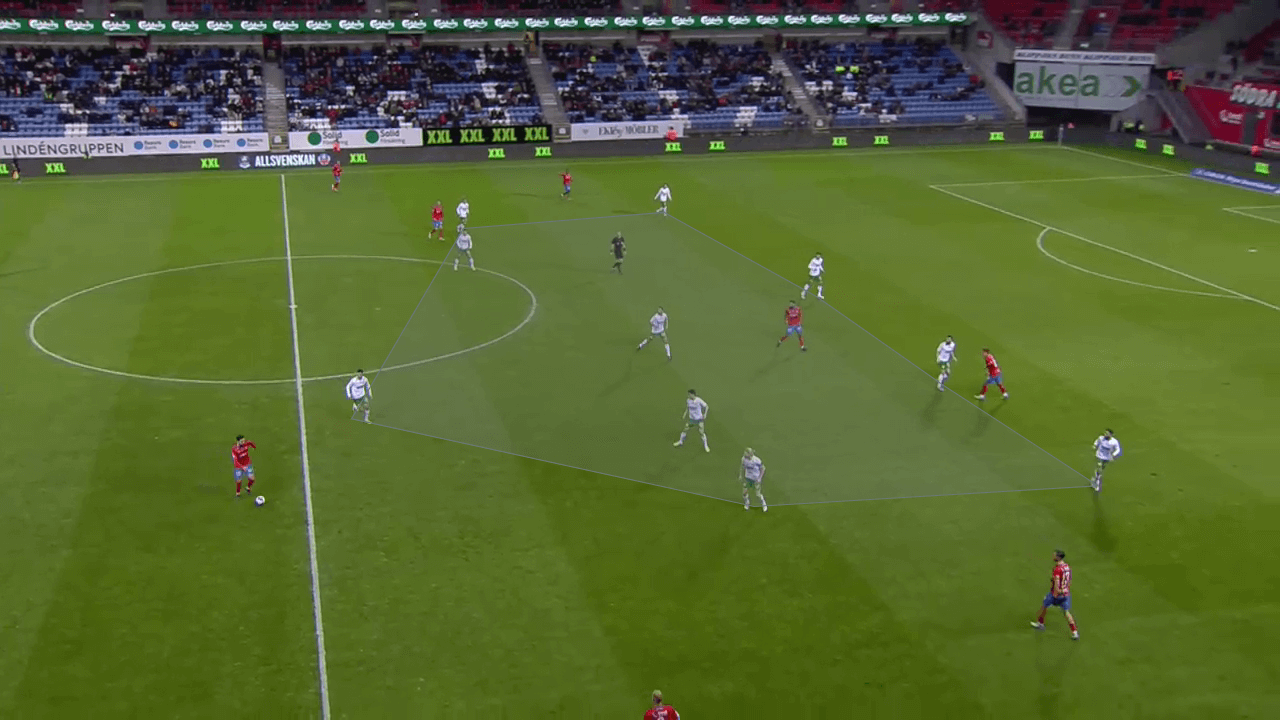
Hammarby, when pressing high to regain possession in dangerous areas to counter-attack as quickly as possible, usually use pressing traps as seen in the below graphics to force the opposition to build wide and then the full-back to jump and press using the touchline as an extra defender whilst his teammates were closing all possible passing lanes.
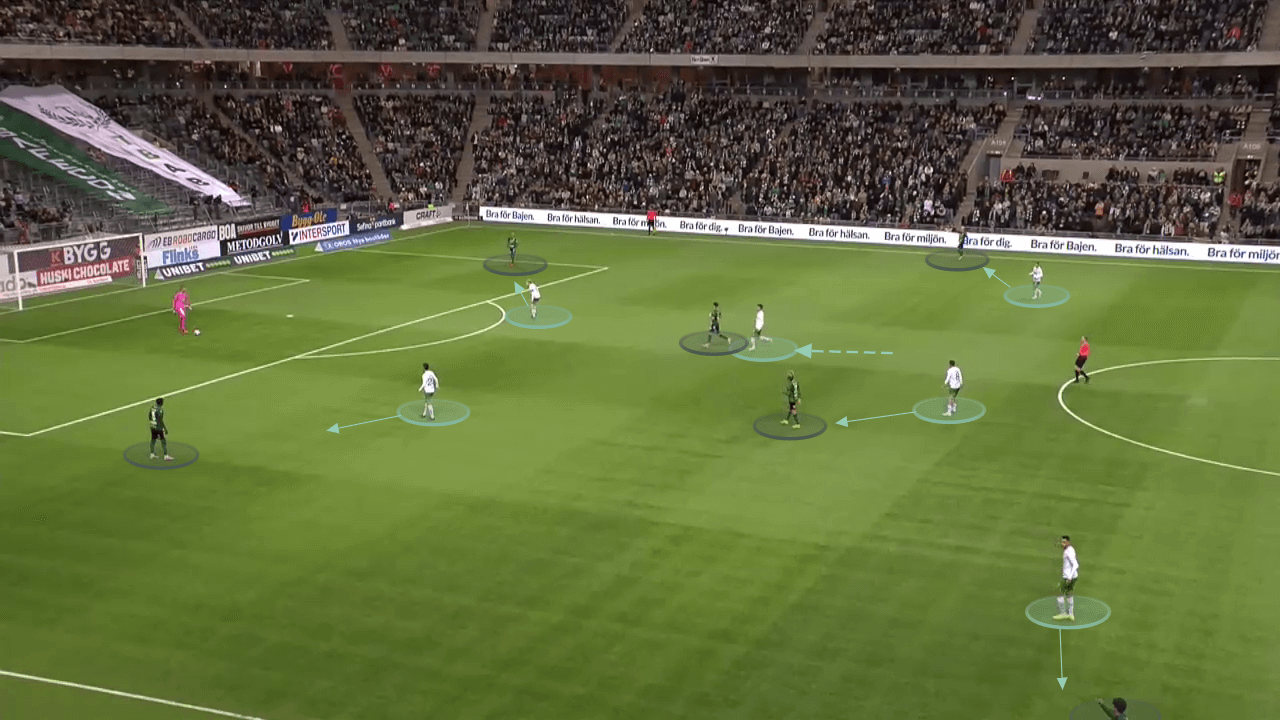
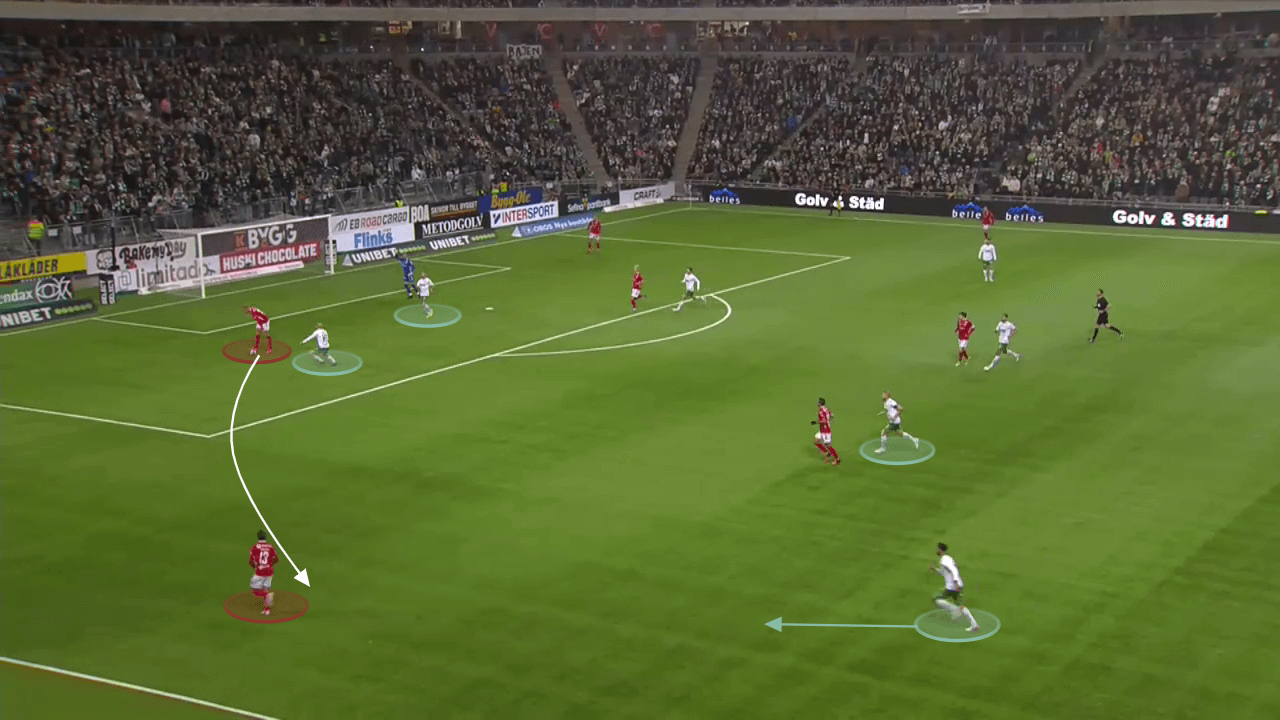
Their defensive approach is highlighted by the defensive territory below. The bulk of their defensive actions is concentrated centrally to force the opposition wide and crush them against the touchline.
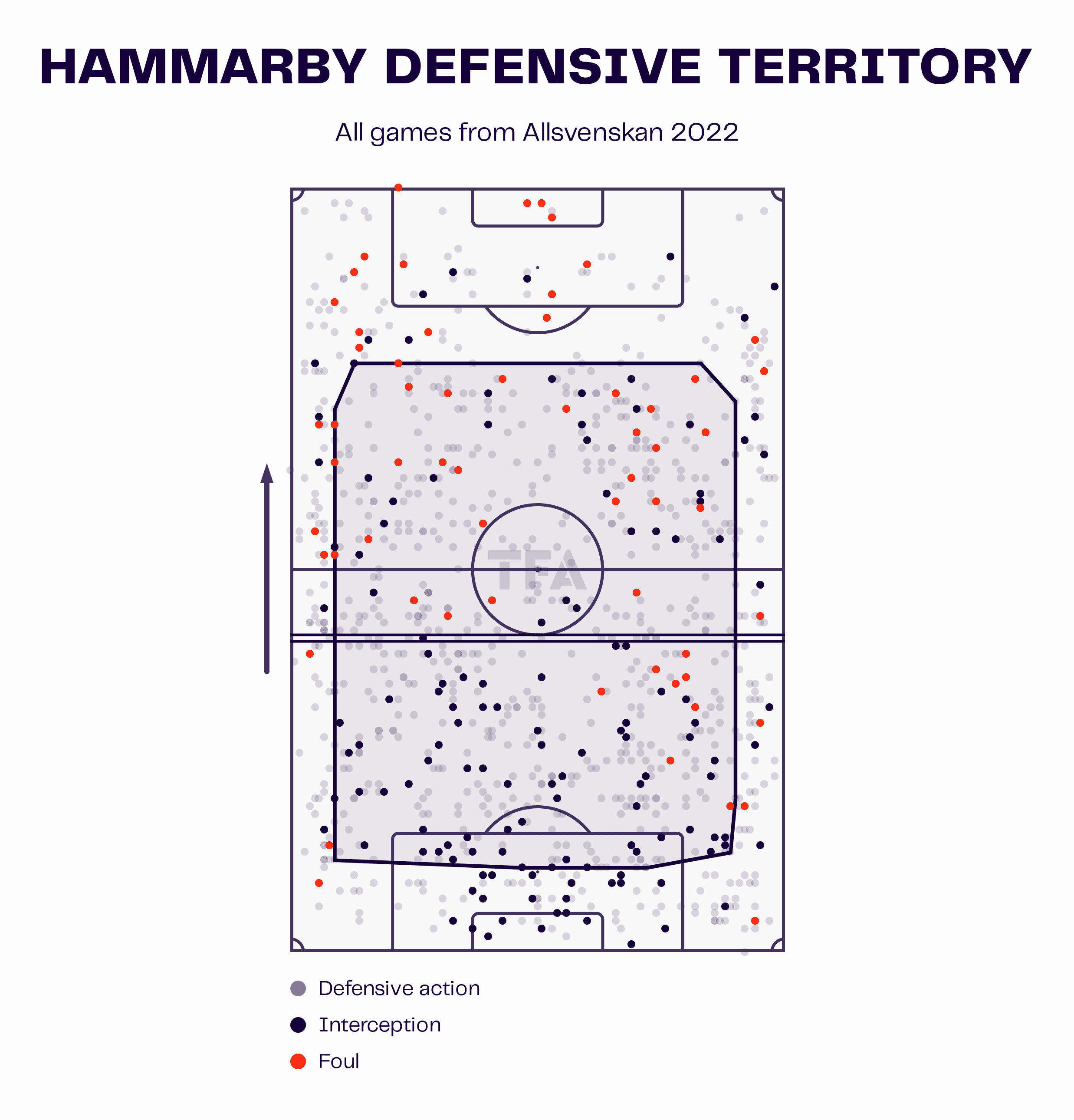
Their high regains map below further illustrates this. They concentrate on high-pressing to recover the ball high and counter within 5 seconds. With Martí Cifuentes they have had 389 high regains and 474 counter-pressing recoveries. Of these, 147 are dangerous recoveries (all defined below).
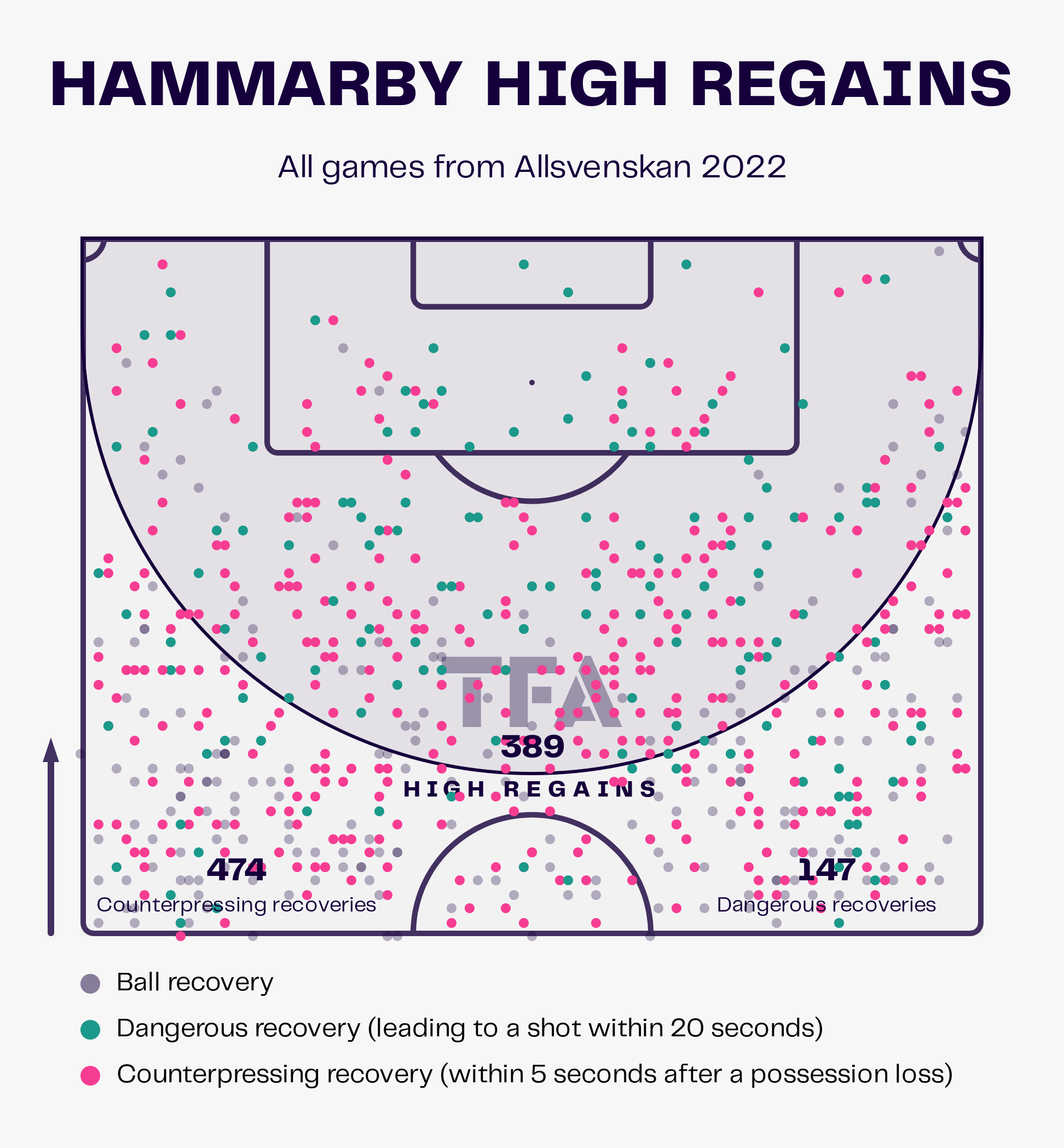
Conclusion
Hammarby, under the supervision of Catalan coach Martí Cifuentes, are an interesting team trying to implement a modern football style that can easily attract your attention and please the eye. There is a promise for more improvement in their second season. Correspondingly, they are good in other domains such as transitions and set pieces.
The future of Martí Cifuentes’ career is bright. He has been linked with clubs in the EFL Championship recently, such as Queens Park Rangers, and we definitely see eyes of other, bigger clubs — perhaps even clubs from a top-five European league like Ligue 1, La Liga or the Bundesliga straying to him in the near future because his tactics are, indeed, impressive. It will be fantastic to see his team develop even more next season.





Comments